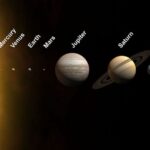Space Words That Start With P
1. Planet
2. Probe
3. Pulsar
4. Perseid (Meteor Shower)
5. Perihelion
6. Penumbra
7. Parallax
8. Photosphere
9. Pyroxene (Mineral found on some celestial bodies)
10. Polaris (North Star)
11. Polychromatic
12. Parabola
13. Plasma
14. Phobos (Moon of Mars)
15. Prograde (Motion in the same direction as the rotation of a planet)
16. Proxima Centauri (Closest known star to the Sun)
17. Planisphere (A disk that represents the positions of stars and constellations)
18. Parsec (Unit of astronomical distance)
19. Precession
20. Proper motion
21. Perseus (Constellation)
22. Protoplanet
23. Penrose diagram (Geometric representation of spacetime)
24. Pyrotechnic (Fireworks in space)
25. Planetary nebula
26. Philae (Rosetta mission lander on comet 67P/Churyumov-Gerasimenko)
27. Plutoid (Type of dwarf planet, including Pluto)
28. Partial eclipse
29. Parabolic trajectory
30. Planetary ring
More About Space Words That Start With P
Welcome to the enchanting world of space words that start with the letter “P.” Journey with us as we delve into the vast cosmic expanse and explore a plethora of captivating terms that will ignite your curiosity and leave you awe-struck. From celestial bodies to scientific concepts, be prepared to embark on a celestial adventure like no other.
Pulsar: Just as a lighthouse guides sailors through treacherous waters, pulsars twinkle in the far reaches of space, mesmerizing astronomers with their rhythmic radio beams. These rapidly rotating neutron stars emit beams of electromagnetic radiation that sweep across the universe, creating intense flashes of light. Pulsars are cosmic clocks, aiding scientists in measuring time and unraveling the mysteries of the cosmos.
Planet: The celestial objects that revolve around stars, planets are fascinating worlds of their own. These spherical bodies, like our very own Earth, host an astonishing variety of landscapes, climates, and ecosystems. Whether it be the gas giants, like Jupiter and Saturn, with their mesmerizing rings, or the terrestrial planets, such as Mars and Mercury, with the potential for extraterrestrial exploration, planets captivate us with their diverse features and potential for harboring life.
Phobos and Deimos: Welcome to the neighborhood of Mars, where two peculiar neighbors reside Phobos and Deimos. These are the two small moons that orbit the red planet, inviting intrigue and sparking the imaginations of space enthusiasts. Phobos, the larger of the two, possesses a mysterious set of parallel grooves on its surface, a puzzle that scientists are still trying to decipher. Deimos, on the other hand, is known for its irregular shape, captivating us with its peculiar form.
Pleiades: Unlock the secrets of the cosmos as we journey into the Pleiades, a stunning open star cluster residing in the constellation of Taurus. Known as the Seven Sisters in ancient mythology, these luminous stars beckon us with their ethereal beauty. With just the naked eye, you can behold a cluster of several brilliant stars, but with a telescope, an awe-inspiring vista of hundreds of stars is unveiled. The Pleiades is a celestial masterpiece, captivating generations with its celestial allure.
Proxima Centauri: Venture into the depths of the Milky Way and encounter the closest known star to our solar system, Proxima Centauri. Nestled within the Alpha Centauri star system, this small and dim red dwarf star silently glows, adding a touch of celestial magic to our cosmic neighborhood. Scientists speculate that Proxima Centauri may possess potential exoplanets orbiting its vicinity, reigniting dreams of interstellar exploration and the search for extraterrestrial life.
Pioneer: Immerse yourself in the grand legacy of space exploration as we pay homage to the pioneering missions that have shaped our understanding of the universe. The Pioneer spacecraft, launched in the 1970s, embarked on a daring journey, capturing our imaginations as they voyaged past Jupiter and Saturn. These ambitious missions paved the way for future exploration, providing invaluable insights into our cosmic surroundings and bringing the wonders of space closer to humanity.
Prepare to embark on a cosmic odyssey through the mesmerizing realm of space words that begin with the letter “P.” These captivating terms offer glimpses into the vastness of the universe, unveiling the beauty and mysteries that lie beyond our world. Join us as we delve into the depths of pulsars, marvel at the wonders of planets, and roam the cosmic neighborhood with Phobos and Deimos. Let us soar into the mesmerizing Pleiades, journey to Proxima Centauri, and pay tribute to the trailblazing missions of the Pioneer spacecraft. Buckle up and prepare for an exhilarating adventure into the celestial unknown.
Space Words That Start With P FAQs:
FAQ 1:
Question: What is a planet?
Answer: A planet is a celestial body that orbits around a star and is not a satellite of another planet. It is spherical in shape and has cleared its orbit of other objects.
FAQ 2:
Question: What is a pulsar?
Answer: A pulsar is a highly magnetized and rotating neutron star that emits beams of electromagnetic radiation. The rotation causes the beams to appear as pulses when observed from Earth.
FAQ 3:
Question: What is a probe?
Answer: A probe is an unmanned spacecraft sent into space to gather scientific information or to explore celestial objects. Probes are equipped with various instruments and sensors to perform their intended tasks.
FAQ 4:
Question: What is a parallax?
Answer: Parallax is the apparent shift in the position of an object when viewed from different vantage points. It is often used to measure the distance to nearby stars or other celestial objects.
FAQ 5:
Question: What is a protostar?
Answer: A protostar is an early stage in the formation of a star. It is formed from a dense cloud of gas and dust, undergoing gravitational collapse. Protostars are not yet undergoing nuclear fusion.
FAQ 6:
Question: What are the planets in our solar system?
Answer: The planets in our solar system, in order from the Sun, are Mercury, Venus, Earth, Mars, Jupiter, Saturn, Uranus, and Neptune. Pluto, previously considered a planet, is now classified as a dwarf planet.
FAQ 7:
Question: What is a partial eclipse?
Answer: A partial eclipse occurs when only a portion of the Sun, Moon, or another celestial body is obscured from view. It is a common phenomenon during eclipses when the alignments are not precise.
FAQ 8:
Question: What is a pulsating variable star?
Answer: A pulsating variable star is a type of star that exhibits periodic changes in brightness or pulsations due to internal processes such as expansion and contraction. These changes can occur over various timescales.
FAQ 9:
Question: What is a plasma?
Answer: Plasma is considered the fourth state of matter, consisting of a highly ionized gas with equal numbers of positive and negative charges. It is commonly found in stars, including the Sun, and in other high-energy environments in space.
FAQ 10:
Question: What is a precession?
Answer: Precession refers to the slow change in the orientation of the rotational axis of a rotating object. This phenomenon occurs for Earth, leading to the precession of Earth’s rotational axis over approximately 26,000 years.


















